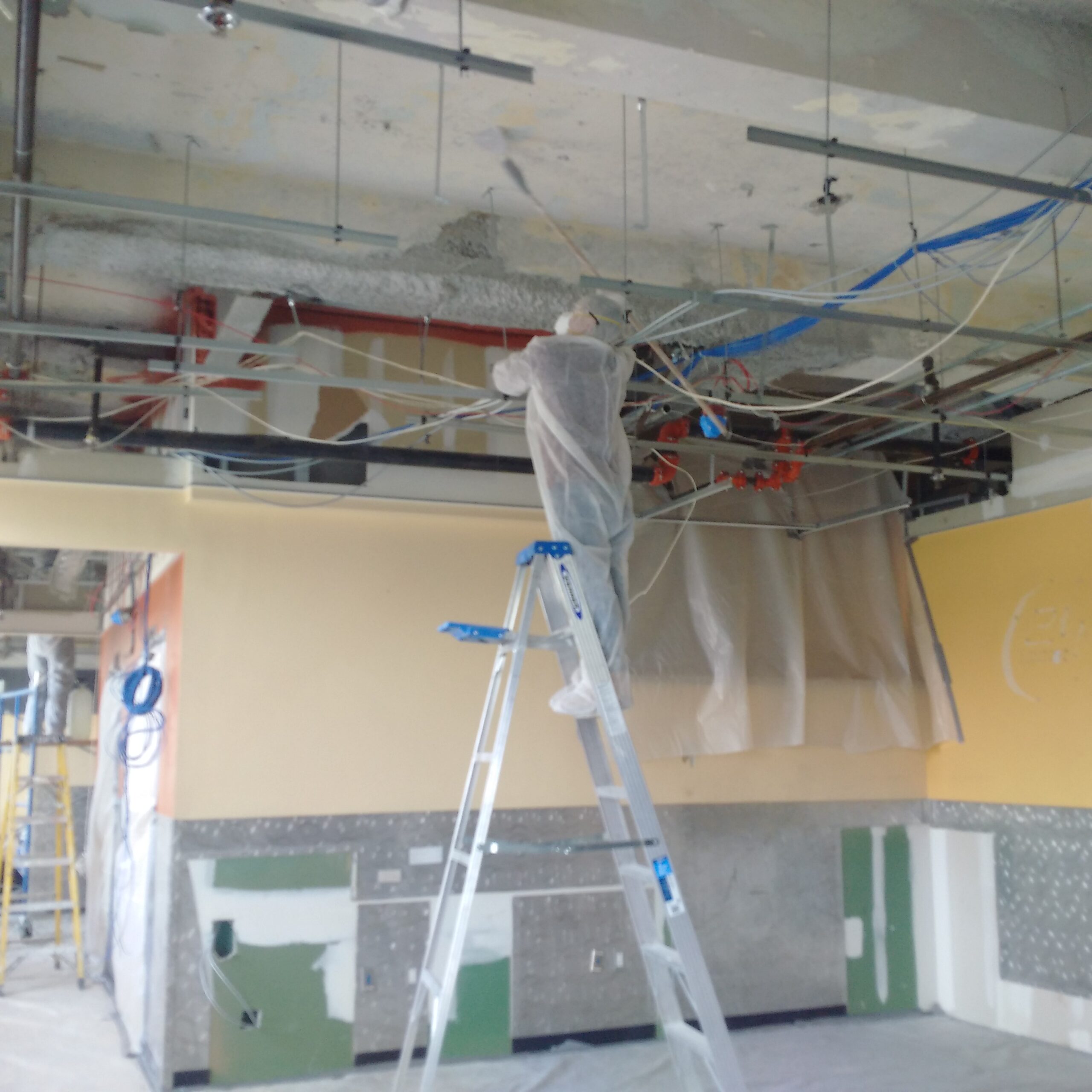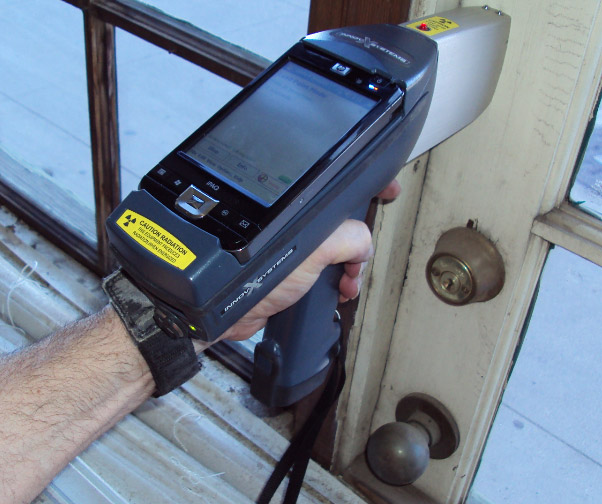Expert Lead Paint Removal Company-- Serving All NYC Boroughs
Expert Lead Paint Removal Company-- Serving All NYC Boroughs
Blog Article
Important Tools and Strategies for Efficient Lead Offense Cleaning
Resolving lead infractions successfully requires an extensive approach that mixes the right devices with calculated approaches. The initial step entails furnishing workers with Individual Safety Tools (PPE) to protect their health. Simultaneously, the use of specialized cleaning tools, such as HEPA vacuums and lead-specific cleaning agents, is important for comprehensive contaminant elimination. Efficient control techniques, including plastic bed linen and unfavorable atmospheric pressure systems, are vital to protect against the spread of harmful materials. In addition, risk-free disposal techniques and stringent adherence to regulatory standards guarantee liable handling of harmful waste. Yet what are the nuanced methods that truly make a difference?
Personal Protective Devices
Individual safety equipment (PPE) is a critical element in the efficient administration of lead contamination cleaning. PPE works as a vital barrier, protecting workers from the harmful impacts of lead direct exposure, which can cause extreme wellness effects. The essential PPE for lead cleanup includes respirators, protective clothing, gloves, and eye protection. Each kind of equipment is specifically designed to mitigate various threats linked with lead fragments and dirt.
Respirators, specifically those geared up with HEPA filters, are indispensable for filtering system airborne lead fragments, avoiding breathing. Safety clothes, consisting of coveralls and disposable matches, stops lead dirt from adhering to employees' garments, decreasing the threat of additional contamination.
Moreover, extensive training on the correct use and maintenance of PPE is necessary. Workers need to be educated on putting on and doffing treatments to prevent contamination. Normal evaluations and substitutes of PPE components are needed to keep their protective abilities, ensuring a risk-free and certified cleanup operation.
Specialized Cleaning Tools

Another necessary tool is the wet/dry vacuum, which can successfully tidy up both dust and liquid pollutants. These vacuum cleaners often include HEPA filters to supply an added layer of safety. Wet cleans or tack fabrics are likewise critical for surface area cleaning; they are especially created to catch and hold lead particles, minimizing the danger of spreading out contamination.
For more persistent deposits, specialized lead-removal cleansing representatives are needed. These representatives are created to damage down lead particles, making them simpler to eliminate. Scrub brushes with strong bristles can help in this procedure, specifically on harsh surface areas where lead dirt often tends to stick extra highly.
In addition, encapsulants are used to secure lead-contaminated surface areas, preventing the launch of lead dirt. These specialized paints and coatings are designed to abide by numerous substratums, giving a lasting remedy for lead control.
Efficient Control Techniques
Efficient containment methods are crucial in mitigating the spread of lead contamination throughout cleaning tasks. Executing robust containment approaches makes certain that lead fragments do not migrate to unaffected locations, therefore securing both workers and the environment. One key approach is using plastic sheeting to seal infected zones. Heavy-duty polyethylene obstacles can be set up from floor to ceiling to create a regulated job location, dramatically lowering the danger of airborne lead dirt dispersal.

To enhance containment, encapsulants can be used to surfaces that are not being gotten rid of or disrupted. These specialized coverings bind lead dirt, minimizing its availability for resuspension. In addition, all personnel have to use ideal Personal Safety Equipment (PPE), consisting of respirators and disposable fits, to avoid contamination spread.
Safe Disposal Practices
Making sure secure disposal practices is a vital part in the monitoring of lead contamination cleanup. Proper disposal alleviates the threat of lead coming back the environment and endangering public health (DOH & HPD Lead Violation Removal NYC).
Carrying lead waste calls for adherence to rigorous standards. Using licensed dangerous waste providers makes sure that the products are managed sensibly. Documents, consisting of shows up describing the kind and amount of waste, must come with deliveries to you could look here track the waste from the website of beginning to its final disposal destination.
Designated hazardous waste disposal facilities are equipped to handle lead-contaminated products securely. These centers commonly utilize sophisticated techniques such as stabilization, solidification, or chemical treatment to neutralize the lead prior to disposal. Landfilling in specialized, lined locations that stop leachate from polluting groundwater is a typical practice for last disposal.
Normal training for workers associated with lead waste disposal is crucial to keep safety and security requirements and avoid accidental direct exposure. By adhering to these practices, companies can substantially decrease the ecological and health and wellness effects connected with web link lead contamination.
Regulatory Conformity Tips

Complying with regulative compliance is extremely important in the successful execution of lead contamination cleaning. Recognizing and complying with government, state, and regional policies makes certain not only the safety and health of individuals yet likewise the lawful and monetary health of the clean-up company. The Environmental Security Firm (EPA) sets rigorous standards, such as the Lead Improvement, Repair Work, and Paint (RRP) Rule, which mandates appropriate certification and training for specialists handling lead-based activities.
Conformity starts with a comprehensive evaluation of relevant regulations and regulations. go to this site Organizations should stay upgraded on any kind of legal adjustments, which can be facilitated through routine training sessions and signing up for market updates. Paperwork is an additional critical compliance aspect; maintaining comprehensive records of all activities, including evaluation reports, worker training logs, and disposal materializes, is necessary.
Additionally, involving with licensed lead assessors or run the risk of assessors makes sure that lead dangers are appropriately determined and alleviated. Employers should impose the use of Personal Protective Equipment (PPE) and ensure that safety methods are purely complied with. Clear interaction with stakeholders, including employees, customers, and regulative bodies, will cultivate a culture of conformity and responsibility, ultimately adding to a much safer and much more reliable lead clean-up process.
Verdict
Effective lead violation clean-up necessitates the assimilation of specialized tools and strategic methods to guarantee safety and security and effectiveness. Making use of HEPA vacuum cleaners, specialized cleaning representatives, and effective containment approaches such as plastic sheet and adverse air pressure systems is vital. Individual protective tools (PPE) safeguards employees from exposure, while risk-free disposal techniques and stringent adherence to regulatory conformity are essential for properly managing harmful waste. Jointly, these steps dramatically reduce wellness risks and add to a cleaner setting.
Report this page